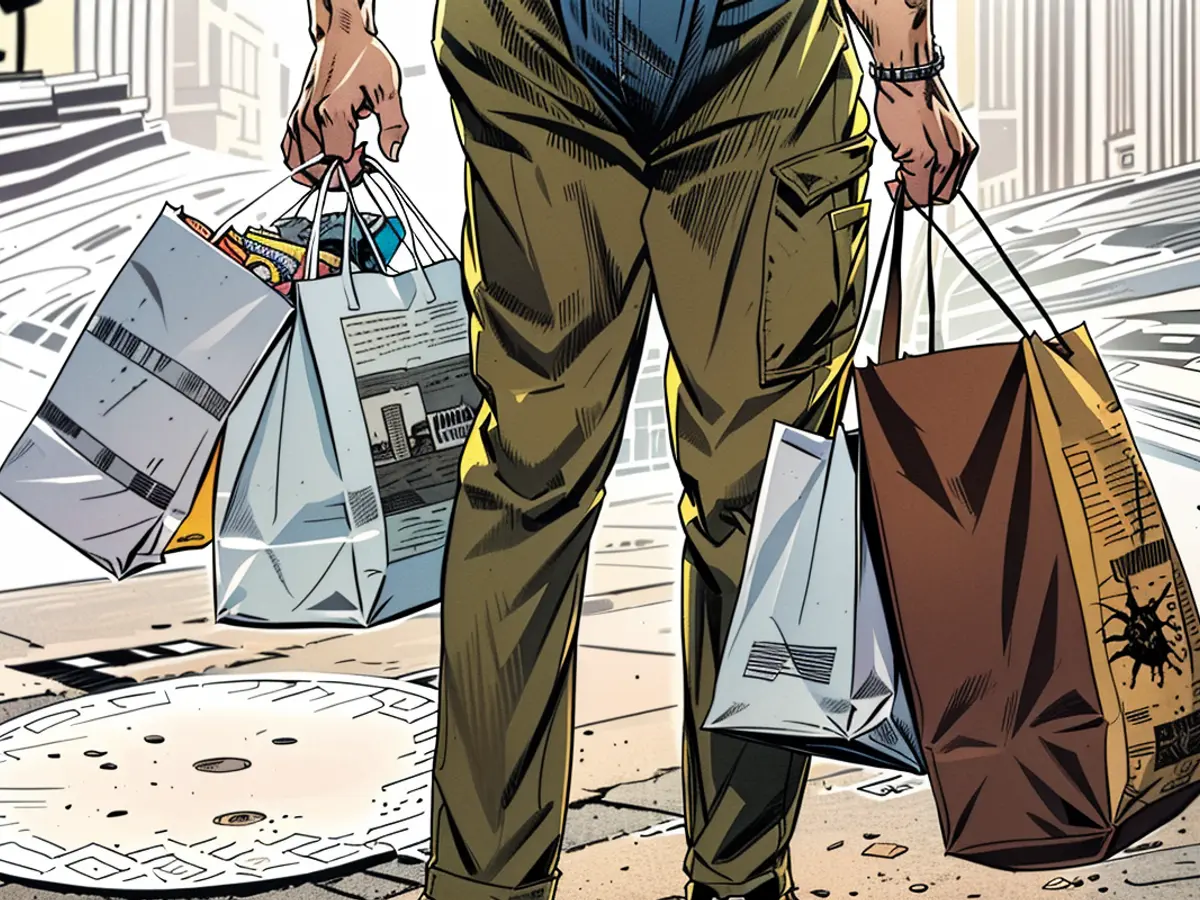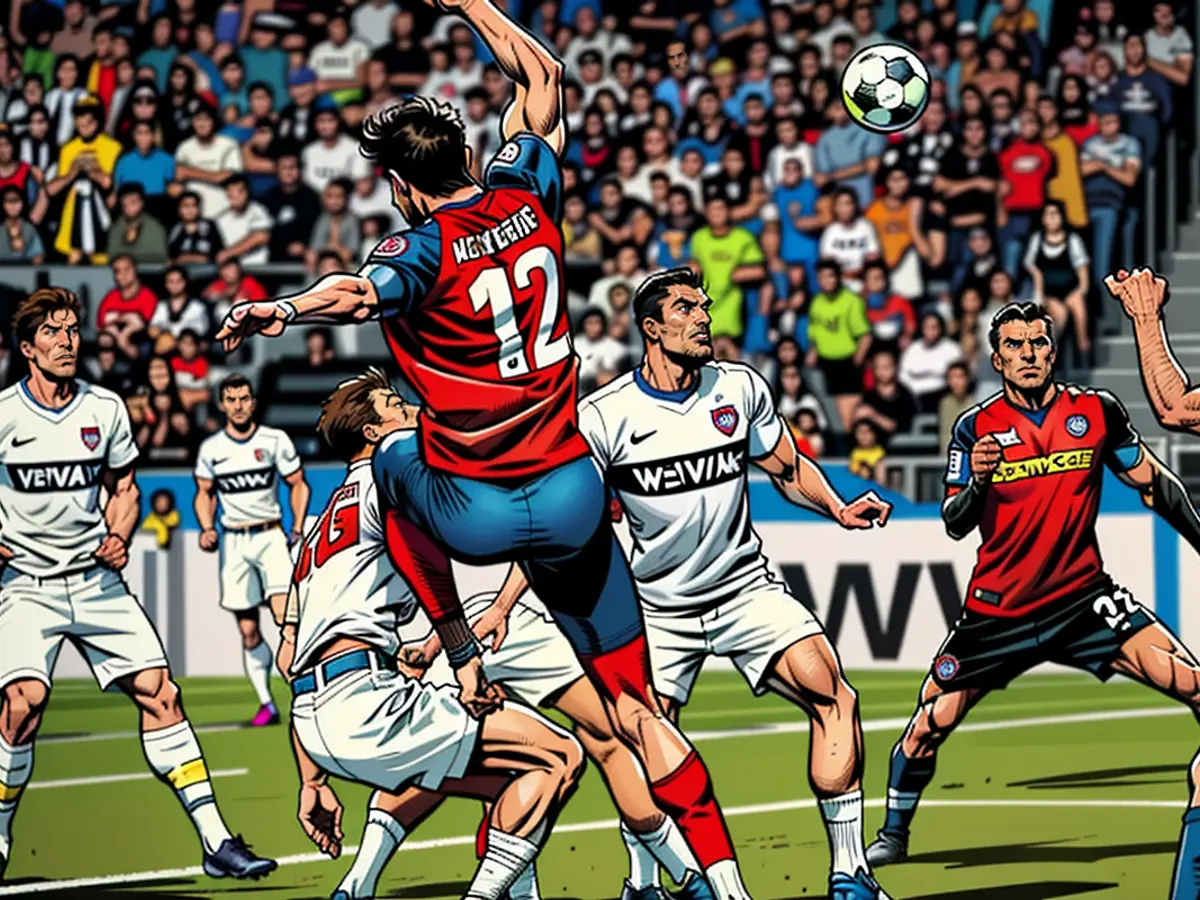Purchasing spree collections have made a comeback.
She shared with CNN that she shops significantly more online now. It seems like money doesn't hold the same weight for her when she's shopping online.
Liu isn't the only one feeling this way. Shopping hauls have been around for years, but experts point out that the combination of products frequently showcased on social media feeds, algorithms boosting recommendations, Buy Now, Pay Later programs, and endless sales have led to more frequent and larger purchases of items like clothing and cosmetics at once.
The Consumer Goods category has seen a surge in the average number of items per transaction, with nearly 11 products being purchased in a single order over the past 12 months, reaching numbers even higher than holiday shopping seasons. The average value of digital carts is also at a 12-month high and has seen a $50 increase from June to $206 per order, according to Dynamic Yield.
Despite signs of an economy under stress, consumer spending has remained shockingly robust, with July retail spending surging past economists' expectations.
The rise of Buy Now, Pay Later
One factor contributing to the growth in purchases might be the increasing popularity of Buy Now, Pay Later (BNPL) services like Klarna and Afterpay, making shopping more accessible even without immediate cash.
This type of financing may amplify impulse shopping tendencies, according to Philippa Ward, a marketing professor at the University of Gloucestershire. People with higher materialism and impulsive purchasing habits are more likely to be BNPL customers, she added.
However, economists and consumer advocates have raised concerns about BNPL, particularly concerning its use among those with tighter finances. Research from the Federal Reserve Bank of New York indicates that people with lower credit scores are more than three times as likely to use BNPL multiple times a year than others.
Influencers and their impact

Shopping hauls have the potential to generate significant revenue for influencers and social media platforms, and they can heavily influence consumer behavior. Seamless online purchases made through platforms can transform passive entertainment into potentially expensive habits, though this raises concerns for those who can't afford it.
One such influencer is Katie Fang, with a loyal audience of over 5 million followers on TikTok, using the platform to sell products used in her videos through ShopMy. Platforms like TikTok have made hauls more visible, leading to increased social pressure to participate and purchase items.
Social media platforms themselves are also entering retail, providing inspiration and offering the ability to purchase items without leaving the platform. For example, YouTube's YouTube Shopping allows creators to sell products directly from videos and earn commission, while TikTok's TikTok Shop has seen the inclusion of over 500,000 sellers, including L'Oreal and e.l.f. cosmetics.
Despite her status as an influencer, Fang admits that she too is influenced by social media trends.
“I feel like recently the beauty industry exploded on TikTok. There are so many new items that I get influenced so easily,” she said.
The company reported that it contributed to 15% of product discoveries in 2022 and effectively pushed shoppers to add more items to their digital carts, influenced by hashtags like #TikTokMadeMeBuyIt.
Beyond social media feeds, personalized recommendations straight from retailers' websites are also powerful in driving shoppers to add more items to their carts.
“The most powerful tools that online retailers have compared to offline retailers are algorithms, data processing tools, and information about you,” said Matthias Lehner, a researcher at the Centre for Retail Research at Lund University in Lund, Sweden.

As companies invest in artificial intelligence technology, algorithms aimed at personalizing users' shopping experiences are becoming increasingly sophisticated, with the potential to mimic the personal touch of store assistants in physical stores.
Amazon's AI-powered feature helps customers find the best fit for clothing based on their past purchases and size preferences, providing a more personalized shopping experience.
The struggle between hauls and minimalism
However, the trend of shopping hauls is being challenged by another growing fad: "underconsumption core," which encourages minimalism and de-shopping as a reaction to constant consumer culture.
Although the shopping haul trend and minimalist countermovement seem at odds with each other, it's clear that the pressures and influences of social media, personalized marketing, and the ease of online shopping continue to shape our spending habits.
Yet, de-influencing goes beyond being a popular hashtag or fleeting trend, as per Katrina Caspelich, the marketing chief at Remake, an organization dedicated to human rights and environmental justice in the fashion business.
Additionally, an expanding collection of studies is casting doubt on social media's safety, with a particular focus on younger users. Although there's still plenty to discover, these investigations shed light on the significant shift that has occurred in our internet use and online interactions within a single generation.
Moreover, with the fashion sector accounting for around 2 to 4% of global greenhouse gas emissions, as reported in Remake's 2024 Fashion Accountability Report, there's growing concern about the dangers of excessive consumption.

"It motivates us to utilize our resources wisely, to extract the maximum value from the items we already own before yielding to the allure of the new hot item," Caspelich highlighted.
Businesses in the Consumer Goods category have seen an increase in the average number of items purchased per transaction, with 11 products being purchased in a single order over the past 12 months. This trend is likely driven in part by the popularity of Buy Now, Pay Later (BNPL) services, which can make shopping more accessible and potentially lead to impulse purchases.
The rise of social media influencers and platforms has also had a significant impact on consumer behavior. One influencer, Katie Fang, admitted that she is influenced by social media trends, and platforms like TikTok have made hauls more visible, leading to increased social pressure to participate and purchase items.








